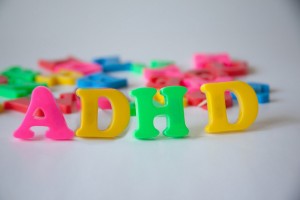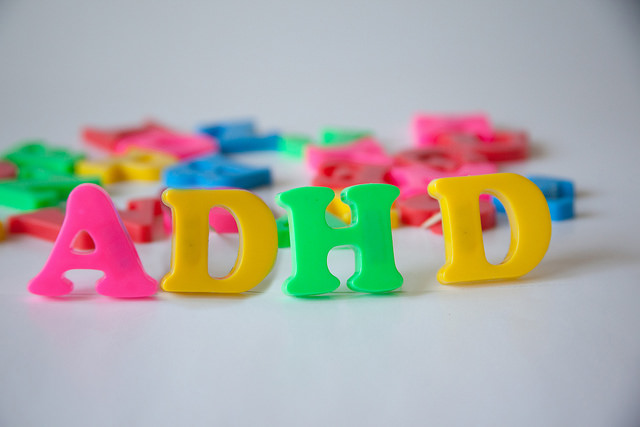
photo courtesy: www.amenclinics.com
Once we started hearing the term ADHD we wanted to know what exactly it was. We knew the basics, it’s a problem with attention and hyperactivity but was there more? How much more can a tiny kid deal with? How much can we deal with? This is when our real education began. Here is what we learned.
We learned that ADHD is a common behavioral disorder. So common in fact that in 2013 a CDC (Center for Disease Control) report said up to 11% of school-aged children (4-17) have been diagnosed with it in their lives. This is up greatly from 2003’s 7.8%. Stats Canada says ADHD is one of the most common mental health conditions in Canada. Either way, in a classroom of 20+ kids, it is likely two will have ADHD.
So what exactly is this disorder that is taking over our kids that I never heard about when I was growing up?
Attention Deficit Hyperactivity Disorder (ADHD) is a neurobiological disorder that becomes apparent in some children in the preschool and early school years. It is hard for these kids to control their behavior and/or pay attention. Their brains work a little differently. Basically there is a problem with the wiring of the nervous system and the brain so the flow of signals in their brains may not work as smoothly or as fast. Having ADHD does not mean they are not smart, just that they need a little help paying attention. I tell my son Mommy can’t see that well and needs contacts, his brain is so excited to learn he just needs a little extra help focusing.
Ok so I understand ADHD now right? WRONG! Just when you think you got it figured out… the next thing to learn is that it can be mild to severe and there are three subtypes of ADHD recognized by professionals:
- Hyperactive-impulsive (does not show significant inattention);
- Inattentive (does not show significant hyperactive-impulsive behavior – previously called ADD); and
- Combined (shows both inattentive and hyperactive-impulsive behaviors).
The DSM-IV (Diagnostic and Statistical Manual of Mental Disorders, 4th Edition) is what most professionals use to give a clinical diagnosis of ADHD depending on what symptoms your child has shown persistently in the past 6 months. Our Doctor gave us an in-depth questionnaire to fill out and one to give our child’s teacher. Don’t be surprised if you are surprised at things you child does regularly but never really noticed until you were forced to sit down and review everything they do.
It is important to note that the behaviors must NOT be linked to stress at home such as a recent divorce, move, illness or other significant life change. For our son they needed to rule out a language or speaking impairment and hearing problem, which meant he needed surgery to remove tonsils, adenoids & get tubes in his ears, which put us months behind in diagnosing his ADHD. If that weren’t enough, it’s also really surprising how many other problems can mimic ADHD symptoms.
Children are diagnosed with a subtype if they have six or more of the following symptoms showing persistently over the past 6 months:
ADHD Hyperactive-impulsive
Symptoms:
- often fidgets or squirms;
- often leaves seat/chair when remaining seated is expected;
- excessive running around and climbing, often in inappropriate situations;
- has difficulty playing quietly;
- often “on the go”;
- often talks excessively;
- blurts out answers to questions before hearing the full question;
- difficulty waiting their turn;
- or interrupts/intrudes others.
ADHD Inattentive
Symptoms:
- Has trouble paying attention to details or makes careless mistakes in school/work;
- has difficulty staying focused on tasks or play activities;
- seems not to listen when spoken to directly;
- fails to finish a task or does not follow through on instructions;
- has problems with organization;
- either avoids, dislikes, or is reluctant to partake in tasks that require sustained effort (e.g., schoolwork, homework);
- often misplaces items that are required for tasks or activities;
- is easily distracted by external stimuli;
- and/or is often forgetful in daily activities.
ADHD Combined
Symptoms:
- Your child would have at least six inattentive symptoms and at least 6 hyperactive-impulsive symptoms. Additionally some symptoms must have been present before seven years of age with impairment in at least two settings (school, daycare, home, etc.). Also, it must be evident that the symptoms are causing a significant impairment in social, academic or other functioning and the symptoms do not occur or are related to another mental disorder.
Although it can be challenging to raise kids with ADHD, it’s important to remember they aren’t “bad,” “acting out,” or “being difficult” on purpose – trust me I know this is not easy to say when you living the life. And remember they have difficulty controlling their behavior without medicine or behavioral therapy, which makes it difficult to give them consequences for behavior they technically aren’t responsible for, but drives you crazy or can even endanger them or others.
Many times in trying to explain it to our son we said although his behavior was bad, he was not bad and we would suggest some behaviors he could do instead. For example although he is mad his sister took the mug he wanted, perhaps next time instead of whipping his mug at her head he can use his words and ask her to switch. Although you may be laughing, this is a conversation I had multiple times with him … and I’m still not sure how much he understood.








